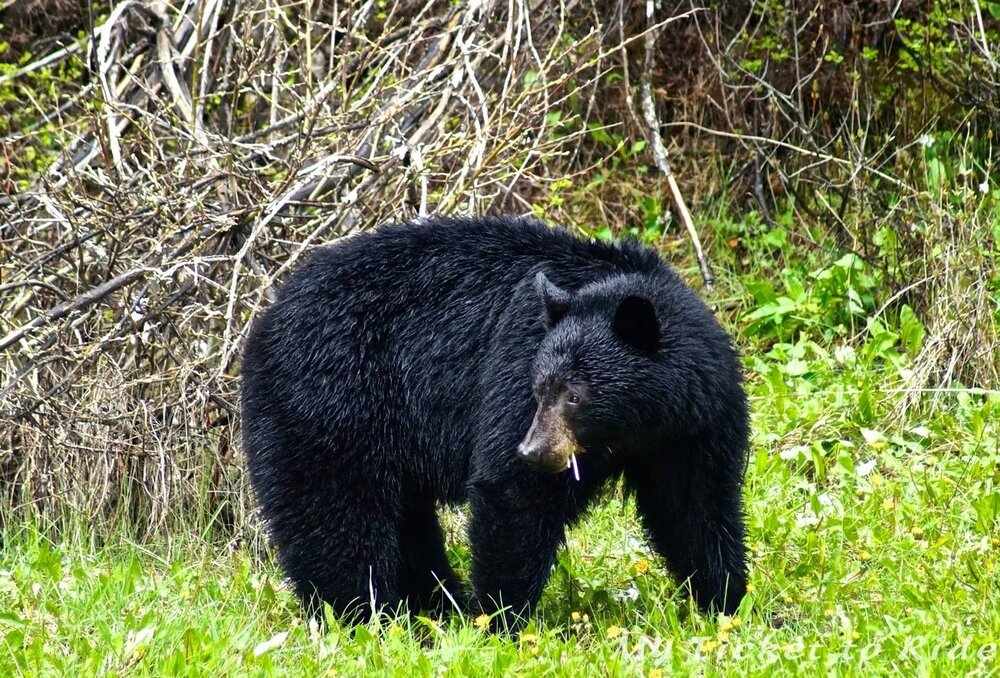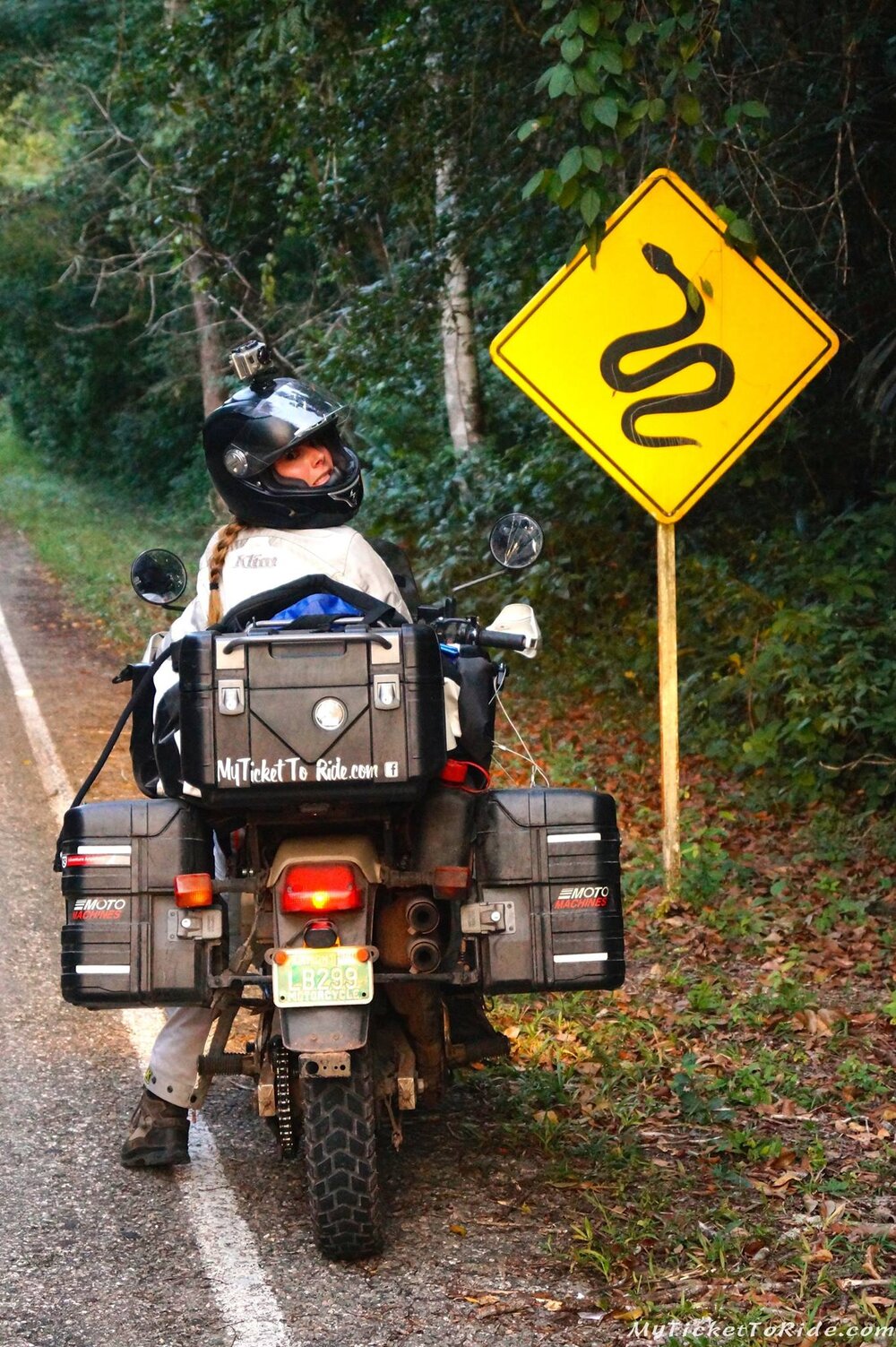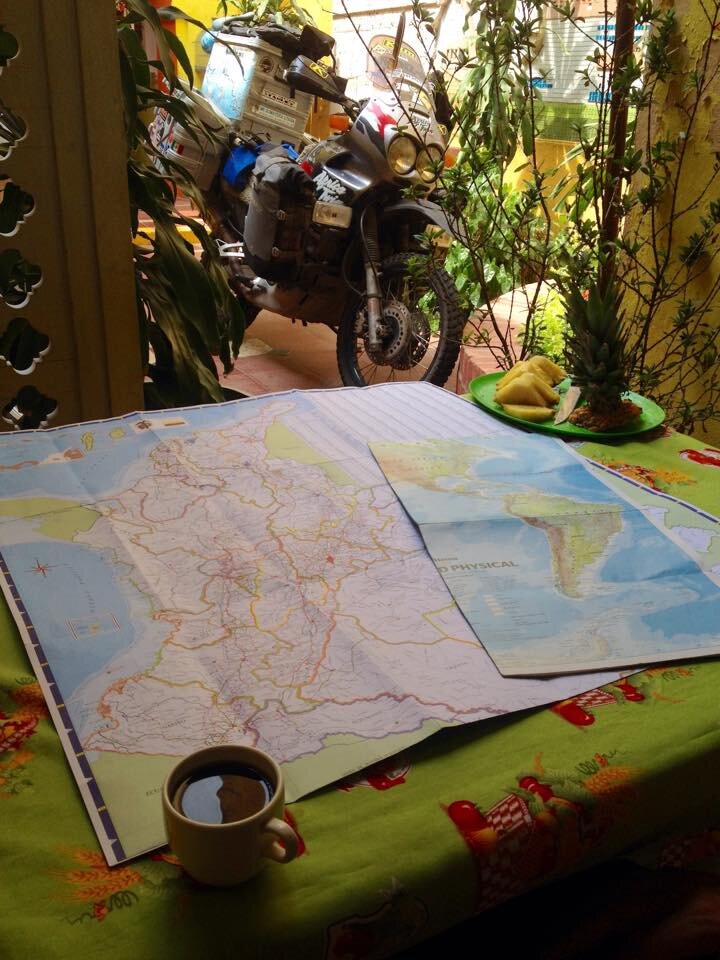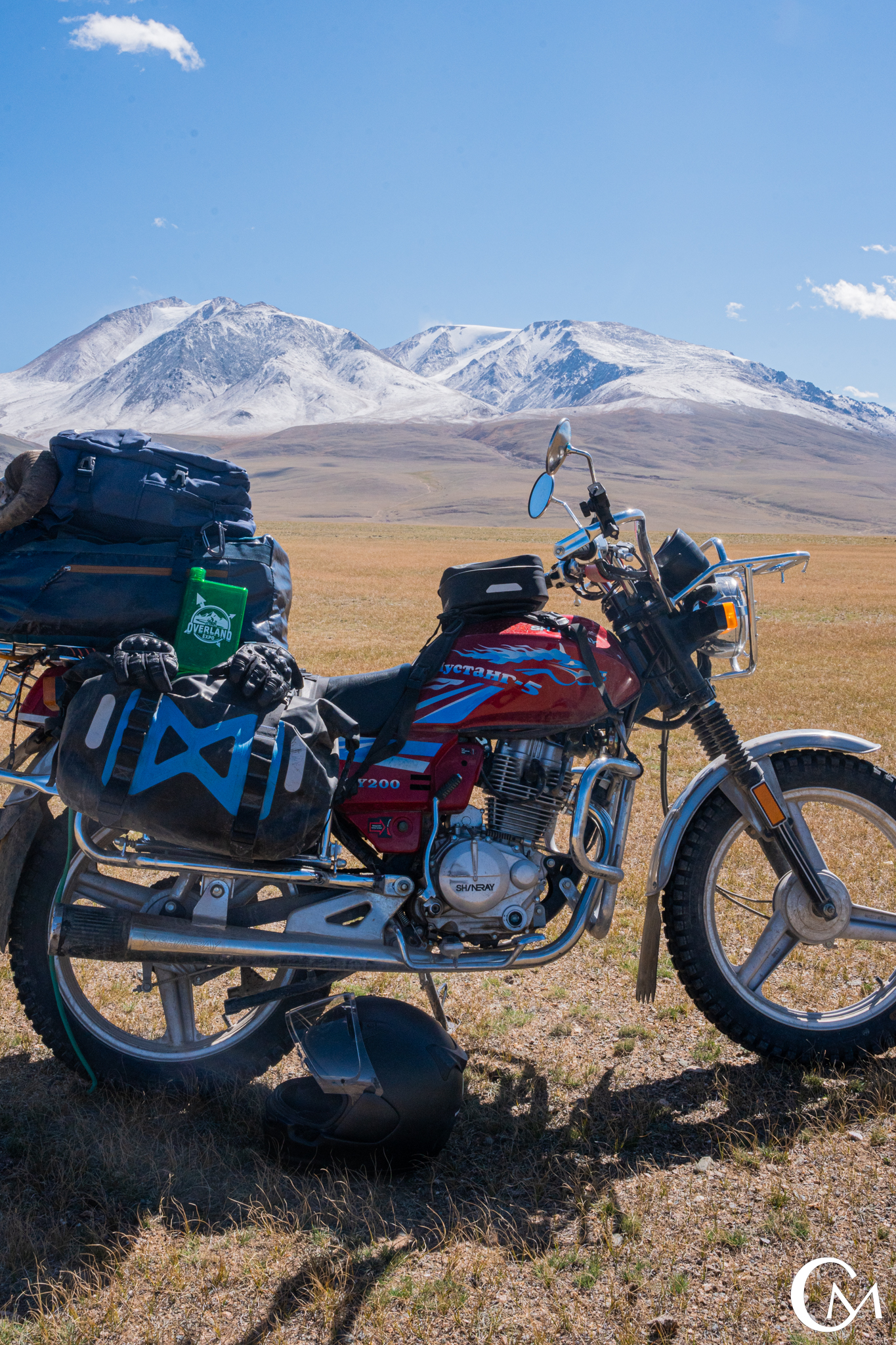Most travelers are familiar with the saying: “It’s not an adventure until something goes wrong.” So, of course, most of us are aware of the epic adventure stories of overlanders who went through hell and lived to tell their tale around the campfire (or to the BBC).
Some of these stories are downright terrifying. Since fear is a best-seller for the media (as a former television reporter, I can attest to this) the majority of the population that has heard a story of someone’s overland travels has also heard a horror story.
Why don’t we hear about the many love stories of overland travelers who met “on the road”? Or why aren’t more tales being shared about the quadriplegic overland traveler who raised more than $20,000 to fund mobility devices for disabled people in developing countries? Because if it bleeds, it leads.
READ MORE: OVERLANDING WITHOUT A WINCH: TIPS & GEAR TO GET YOU UNSTUCK

Thumbs up some some of the most “dangerous” police in the world. Image: @MyTicketToRide
In the collection of commonly asked questions about my overland travels through 31 countries on four continents is some variation of, “Is it dangerous to travel like that?”
While it can be one of the most difficult questions to answer, it is also one of my favorite questions to field. In reality, the answer is as simple as it is complex: to a large degree, overlanding can be as dangerous as you allow it to be or as safe as you strive to make it.
People often cock their heads in confusion at this response from me. But when you think about it, every time you leave your home — or, yes, even staying in your home — you are exposing yourself to a certain amount of risk.
“When it comes to general safety whether its recovery or first aid, the best tool at your disposal is right between your ears.” – Dean Shirley, East Coast Overland Adventures
Every day at home, we make decisions about the amount of risk we are willing to invite into our lives and the types of risk we want nothing to do with. When we overland, and the road becomes our home, we need to consider risk in the same way.
In this article, I’ll cover some of the ways I avoid risk while traveling and some simple tips and recommendations from other travelers.
“During my solo overland trip through Central and South America, I never felt like I was in danger. I used the same situational awareness I do when traveling in the states—knowing where to go and where to avoid is key—I did the same thing when living in Los Angeles.” – Alison DeLapp, @AlisonsWanderland
This is not to say that I haven’t been exposed to danger, because, like everyday life while not traveling, sometimes you’re just in the wrong place at the wrong time or your best-laid plans implode and the result is unpleasant. So, I’ll also cover some recommendations for how to respond when danger does arise.

It’s hard to be afraid of a bear who is munching on dandelions. Image: @MyTicketToRide
Personal Preparation
Make sure you have the basics covered here. Don’t leave home without a good insurance policy that includes extraction. I used my travel insurance twice in seven years — once to cover the replacement of a broken camera and once for an ear infection.
Take a self-defense class — or two. Pack a really good first aid kit (like one from MyMedic) and learn how to use the items in the kit. Having a general antibiotic in your med kit, in case you come down with a fever overnight that renders you immobile while you’re in the middle of the jungle in Brazil (speaking from experience) is a really good idea.
Employing animal safety practices (shaking out boots in the morning, etc.) and having bear spray on hand are good animal-danger deterrents.

Nope!
Navigation
Route Planning & Preparedness
“Know before you go” is a great colloquialism to bear in mind when planning your route and preparing for it. Being aware of the type of road conditions you’ll encounter, ensuring that your driving skills are up to snuff to take them on and that your vehicle is properly equipped for the terrain is key. Also, making sure you’ll be in the position to self-rescue, if necessary, is important.
“Training is the best investment you can make because it goes with you no matter what. Gear without knowledge is useless. Knowledge without gear is ingenuity.” – Dean Shirley, East Coast Overland Adventures
Talk to the Locals
This is hands down my best advice for a variety of queries about overlanding, but particularly when asked the question about how to stay safe. People tend to be very proud of their home town/city/state/country — they want visitors to have a good experience.
I make it a point to talk with locals and ask for advice and directions with the use of a paper map, when possible, and especially in cases where I didn’t speak the local language very well. You’d be amazed at how easy it is for someone to use hand signs and gesticulations to tell you to take one route over another because one of the roads is washed out or commonly frequented by carjackers. This is also how I’ve gotten some of the best restaurant recommendations of my life.
There is a flip side to this: If my intent is to wild camp, I never ask a local where I can camp in a remote location. I might ask a local restauranteur if I can pay them a few extra dollars and camp safely in their back yard.

Mapping out the day ahead. Image: @MyTicketToRide
Technology & Safety: Make New Friends, But Keep the Old
There is so much technology available to make overland travel safer. We have satellite navigation that can help us avoid getting lost and off-line map apps to aid us when satellites fail. I travel with a basic SPOT tracker; my parents took great comfort in the receipt of my “Camp is pitched for the night and all is well” messages. And I took great comfort knowing that if I needed to let someone know where I was and get help, I could press a button and help would be on the way. The not-so-basic trackers (such as the Garmin inReach) allow for two-way messaging, which can be very handy.

Guajira Peninsula, Colombia Image: @MyTicketToRide
iOverlander actually lets users enter a “Warning” marker to let fellow travelers know of a potential danger or issue at a given location.
READ MORE: GEAR ESSENTIALS: NAVIGATION, ELECTRONICS & RADIOS
So, make new techie friends, but keep the old. Carry paper maps and a compass in case your batteries die. Develop a communication check-in plan with your family at home so if your tracker goes missing, they know when to expect to hear from you via phone or email. Get advice from fellow travelers and from locals.
I have also found that people are generally a lot nicer than you give them credit. In remote areas people are used to relying upon each other and their neighbors. A warm smile and a firm handshake will get you pretty far. – Dean Shirley, East Coast Overland Adventures
Don’t Be Duped by Superlatives
The most terrifying experience of my life occurred while riding through a ranch in Australia, which, at the time was considered to be the “safest” country for a female to travel around solo. (My travel partner happened to be a 6’4’, ex-military, burly guy, so it’s not like I was preyed upon due to my slight build or gender.) Assailants under the influence of drugs or alcohol are the outlier for any experience where you might be inclined to try to navigate a potentially dangerous or overtly dangerous situation. Just run, or be prepared to.
READ MORE: HOW TO START OVERLANDING
Road Safety
Learn to blend in with local traffic. If you try to drive like your Driver’s Ed Instructor taught you at the tender age of 15, there is a good change your vehicle (and/or you) won’t make it very far. In my experience, traffic culture is as nuanced as food culture. Each city has its own take on “the rules of the road” and sticking to what you think is right or safe can actually be the most dangerous way to drive.
“Drive into a city on a Sunday. It’s usually the quietest day on the roads and if you’re looking to do some sightseeing, you might get to park your bike right in front of some picturesque spots that would normally be surrounded by vehicles and people.” -RTW Rider, Roel Bremmers @RoelOffTheRoad)

Out for a Sunday ride in El Salvador. Image: @MyTicketToRide
And when things go sideways…
Breathe. Stay calm. And remember…
Most people are after the same thing in life: a better life for their loved ones and children. If the only way someone can see to accomplish this is by stealing, that is their reality; if they’re threatening bodily harm, it is in your best interest to sacrifice your personal belongings in lieu of your personhood.
Evil is pretty rare, but does exist. Respond accordingly.
Group-think is a thing, and in my experience, groups can be more dangerous than individuals as they may egg one another on or work as a team to get what they want from you.
Ultimately, people tend towards laziness. So anything you can do to make them work harder to make you a victim, the better. Simple things like locking doors and being alert and aware of your surroundings can go a long way. Having a “throw-away wallet” complete with (expired) credit cards and a fake ID AND actually throwing it away from you, is a great ploy. But causing a scene or running away can be amazingly effective in some circumstances, too.
“The few things I do to ensure my own safety are: be proactive, be situationally aware, and know when to turn around.” – Dean Shirley, East Coast Overland Adventures
On one hand, bad things can and do sometimes happen. No matter how far from home we are. And this is why I encourage everyone to read Gavin de Becker’s book, “The Gift of Fear.” It can help people identify a potentially dangerous situation before it becomes dangerous, or respond more effectively once a dangerous scenario is critical. This can make all the difference at home and abroad.
On the other hand, Dr. George Gerbner’s studies on Cultivation Theory are pretty compelling, especially given today’s 24/7 news cycle: people who consume large amounts of media are susceptible to mean world syndrome, whereby due to disproportionate reporting of violence and negative news, people are coming to believe the world is a much more dangerous place than it actually is.
“The world isn’t as scary as the media would have you believe.” – Dean Shirley, East Coast Overland Adventures
So, stop watching TV. Start following “good news” sites to balance the not-so-good news you’ll see from every other news outlet. And go experience the world and all of the good it has to offer for yourself.
HEADER IMAGE: @MyTicketToRide


